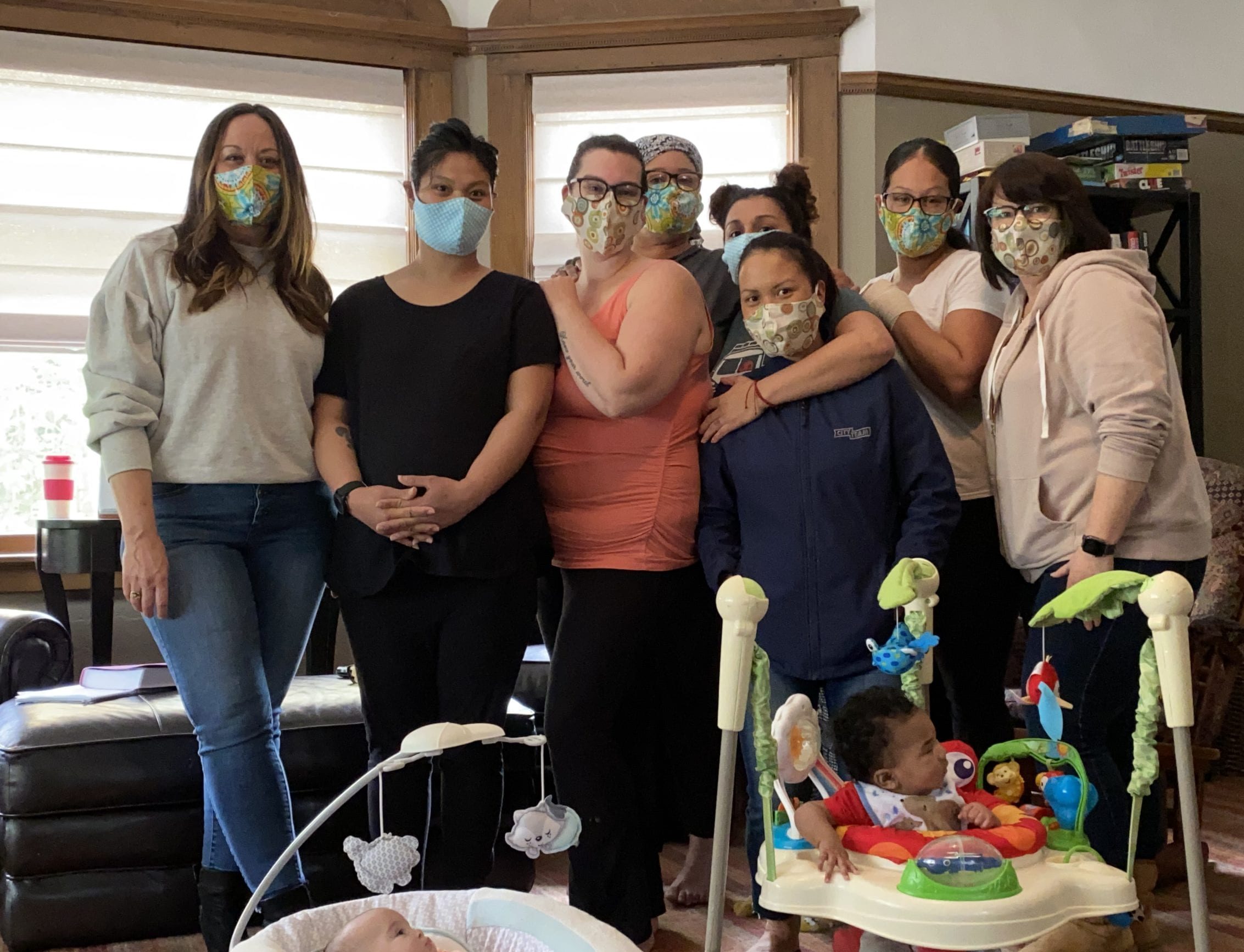COVID-19 has been tearing through sheltered living spaces in San Jose, but at least one operator of such facilities has managed to keep all of its women residents safe during the pandemic.
CityTeam, which offers temporary housing to people in need, has so far kept its four women’s shelters in San Jose COVID-free, although it has had a few exposure scares, said Melody Alvarado, director of the organization’s women’s program. It’s done that by being vigilant and cautious — and by reducing the number of people it houses, she said.
“We’ve had multiple exposures where we’ve had to walk through the quarantine process, testing, doing the isolation and the contact tracing,” Alvarado said. “But we’ve had zero positive cases, which is amazing to be able to say that.”
CityTeam women’s shelters in San Jose offer transitional housing for new mothers, women recovering from substance abuse, those who’ve suffered from domestic violence and women aging out of foster care.
When the epidemic began to take hold in the city, CityTeam changed the way it operates. To protect existing residents from the coronavirus, the organization stopped taking in new ones. It started holding meetings over Zoom. And it limited volunteer work to just what could be done online.
It also isolated and tested residents who had been exposed to the virus to prevent an outbreak.


CityTeam reduces number of people in shelters
But perhaps the biggest change Alvarado and her team made in response to COVID-19 was to reduce the number of people they serve. The women’s shelter program has been running its facilities at about two-thirds capacity. Its House of Grace facility previously could house up to 24 people; now it’s down to 18. Likewise, its Heritage Home shelter now offers housing to just 8 people, down from 12 prior to the onset of the epidemic.
Health experts have warned about the unique dangers faced by shelters during the pandemic. Because residents can find it hard to socially distance in such facilities, COVID-19 can spread more easily, Santa Clara County deputy public health officer Dr. George Han warned.
“What happens is as cases rise in the community, that also means there’s more cases that get introduced into these congregate settings,” he said. “We have been seeing outbreaks increase over the last few weeks.”
CityTeam’s men’s shelters have seen a smattering of cases throughout the epidemic.
Mary, a homeless resident att the Roosevelt Park encampment, said she’s happy CityTeam’s women’s shelters had no positive cases.
“Women’s shelters have a lot of domestic abuse survivors,” said Mary, who asked that her last name be withheld for fear of people learning her homeless status. “Knowing there’s no (COVID-19) there might get more women to sign on.”
Outbreaks at other shelters
Other San Jose shelters haven’t been as successful in preventing the spread of COVID-19.
HomeFirst’s Boccardo Reception Center saw a few cases each month before getting hit with 55 new ones following the local resurgence of the pandemic in November.
“The thing with congregate living spaces is they respond to whatever is happening in the greater community, and so our community began to spike around Thanksgiving,” HomeFirst CEO Andrea Urton said. “We immediately quarantined people and then we partnered with the county to get them in a hotel or a motel so they can be socially isolated.”
Of the more than 100 people who were removed from Boccardo Reception Center, more than 61 residents have since completed the quarantine period and were cleared to return.
Like CityTeam, HomeFirst has put in place measures to try to limit outbreaks. The organization spent $20,000 on ultraviolet lights to disinfect surfaces. It replaced all the air filters in its shelter facilities with high-efficiency particulate absorbing, or HEPA, ones. Such filters can prevent the virus from being spread through the air when someone coughs or sneezes.
HomeFirst also reduced its capacity. While it was once sheltering around 250 people a night at Boccardo, it’s now limited the center to just 110.
And it’s taken steps to ensure residents can socially distance while they sleep, separating them from each other by empty beds.
“We have things as little as people sleeping head-facing-toes, that way if somebody does cough or sneeze, they’re coughing onto somebody’s feet,” Urton said.
[optin-monster-shortcode id=”mc7dsaffrt6oqdqtfsob”]
“We went eight-and-a-half months without a spike in incidents at any of our facilities,” she added. “I think that speaks volumes for how hard our staff has worked.”
Feelings of isolation
At its men’s facilities, CityTeam has taken similar steps to try to protect residents from COVID-19.
It cut back on the number of people it houses from about 50 residents to just 27. It also recently increased its frequency of testing residents for COVID-19 from once a month to once a week. And it temporarily ceased offering overnight stays for walk-in customers to prevent them from spreading coronavirus to existing residents.
“The clients we have right now are working, and if they’re not working, they’re sheltering-in-place,” said James Alvarado, an operations manager in CityTeam’s San Jose office.
The stringent measures CityTeam and other shelter operators have put in place to prevent outbreaks have their downsides. They can’t serve as many people. And those they can serve often feel isolated or lonely.
The social distancing rules at CityTeam’s women’s shelters prohibit residents from having visitors and from visiting people outside their households. Many residents long to gather with their families again, Melody Alvarado said.
“The biggest struggles our women are having is not having a lot of family interaction and the freedom to do what all of us are experiencing as well,” she said. “They want this to be over. They’re tired of being inside and get a little bored looking at the same walls all the time.”
Contact Vicente Vera at [email protected] or follow him @vicentejvera on Twitter.



Leave a Reply
You must be logged in to post a comment.